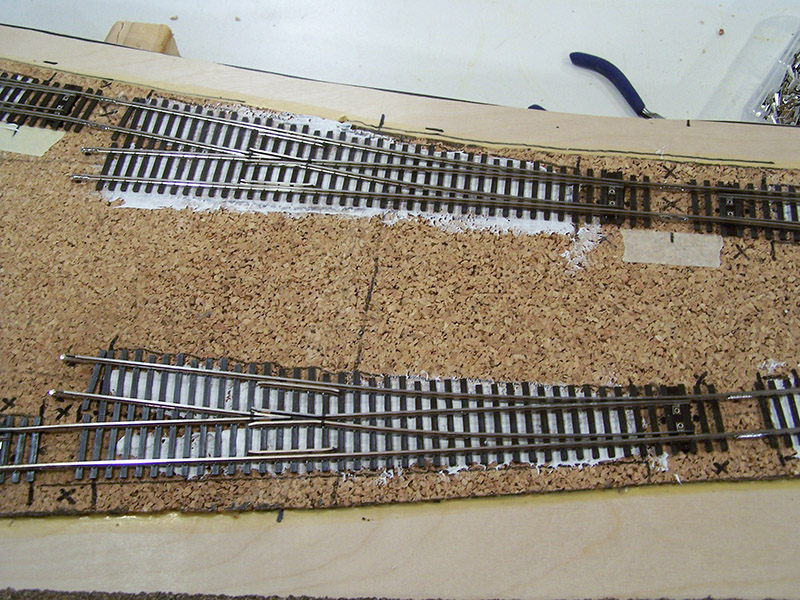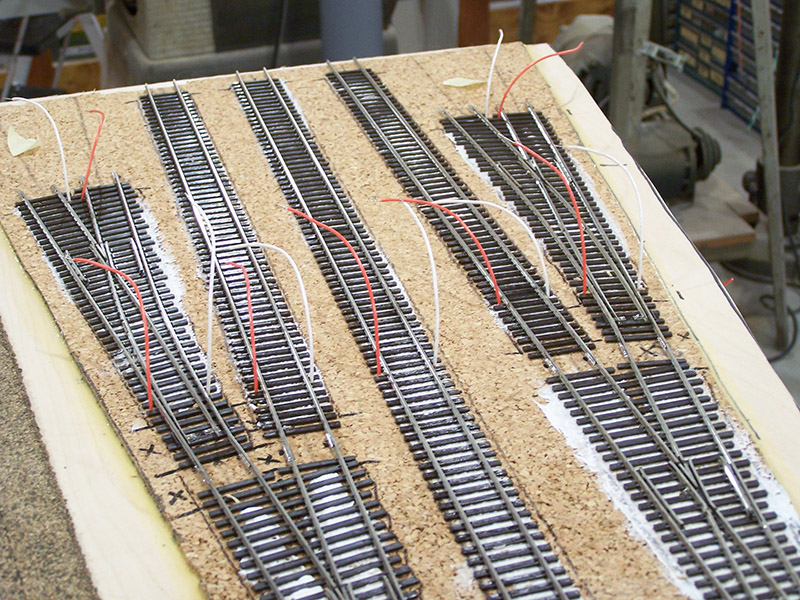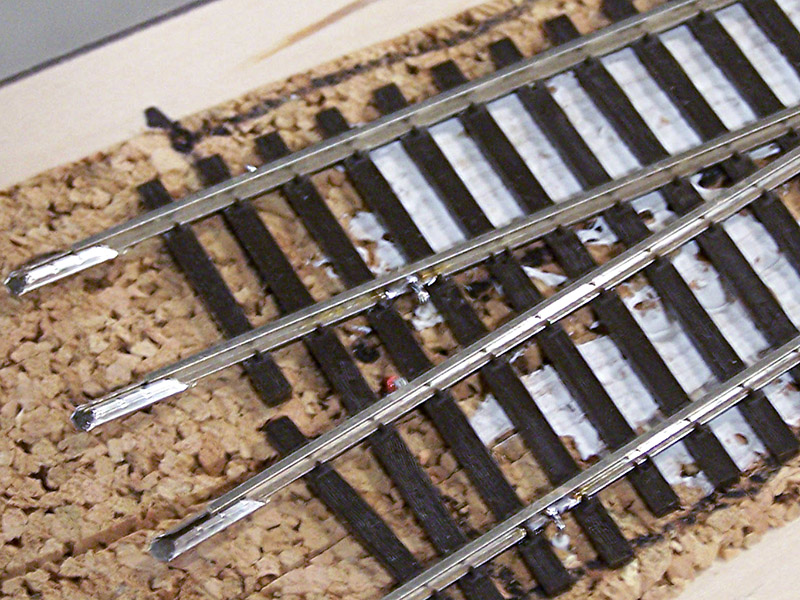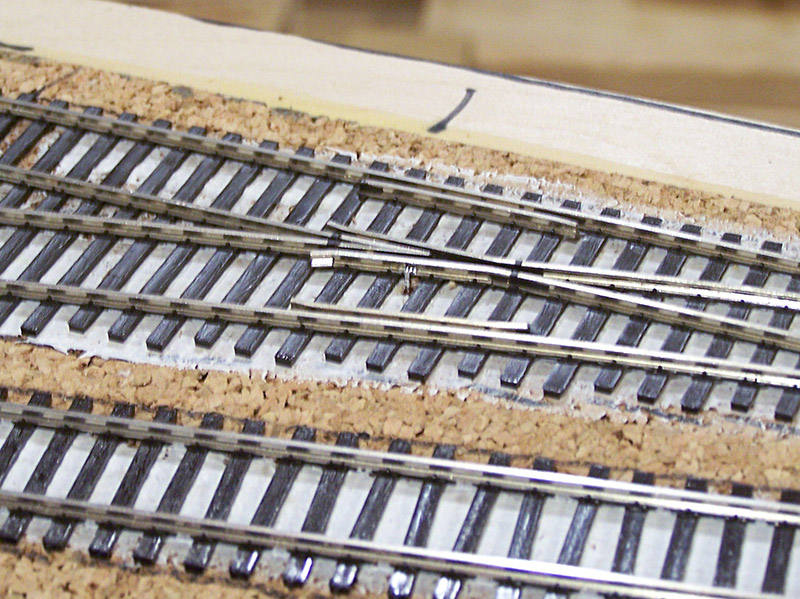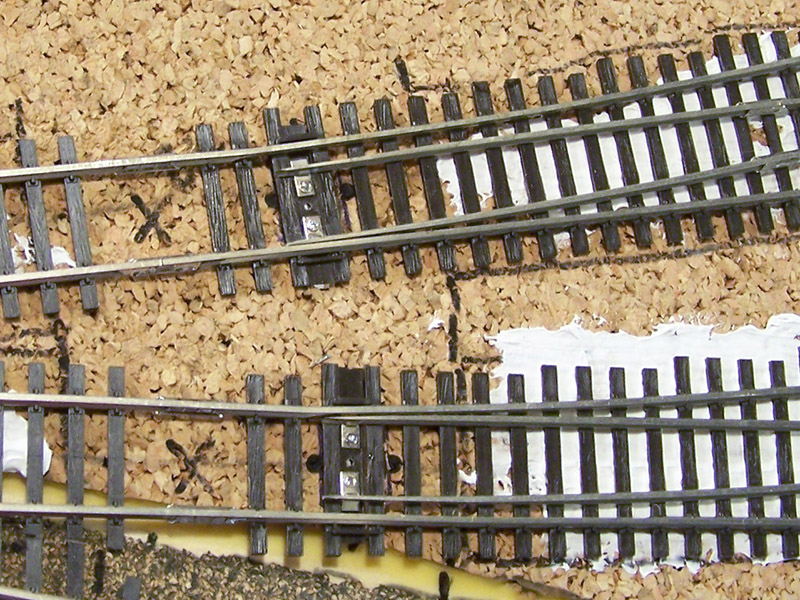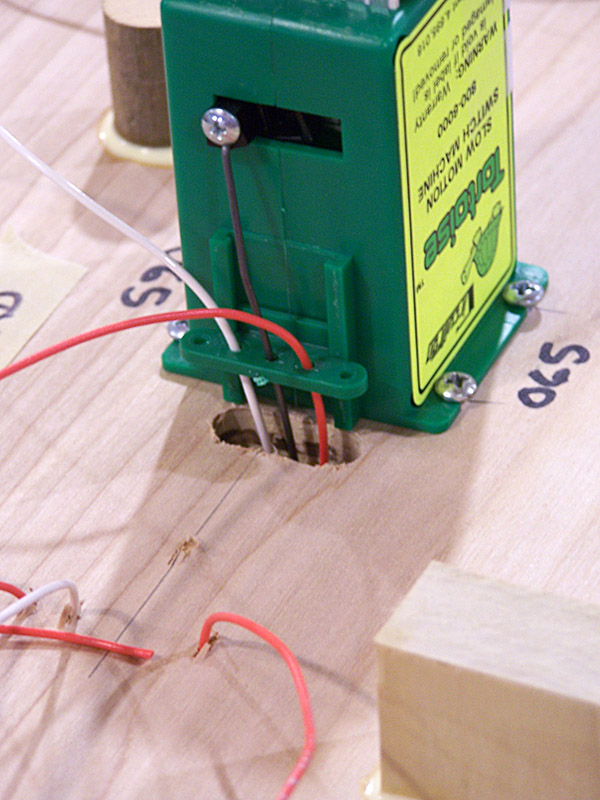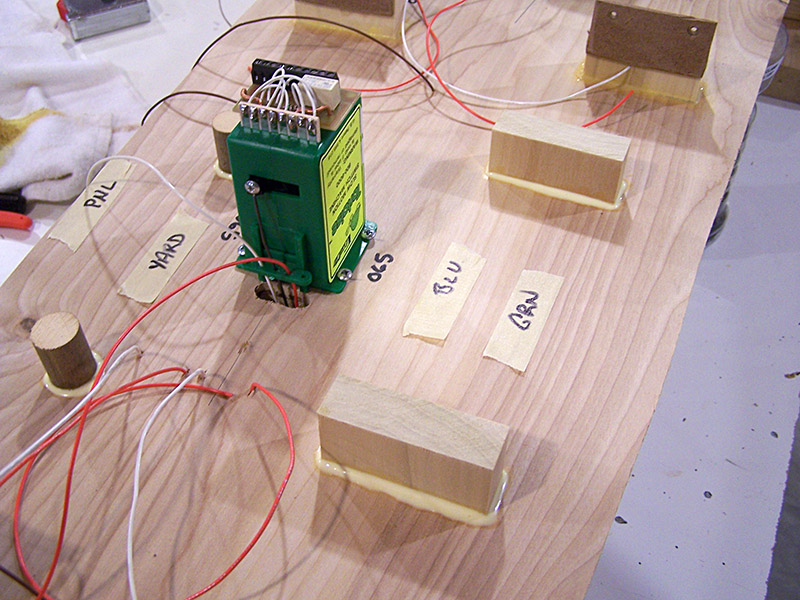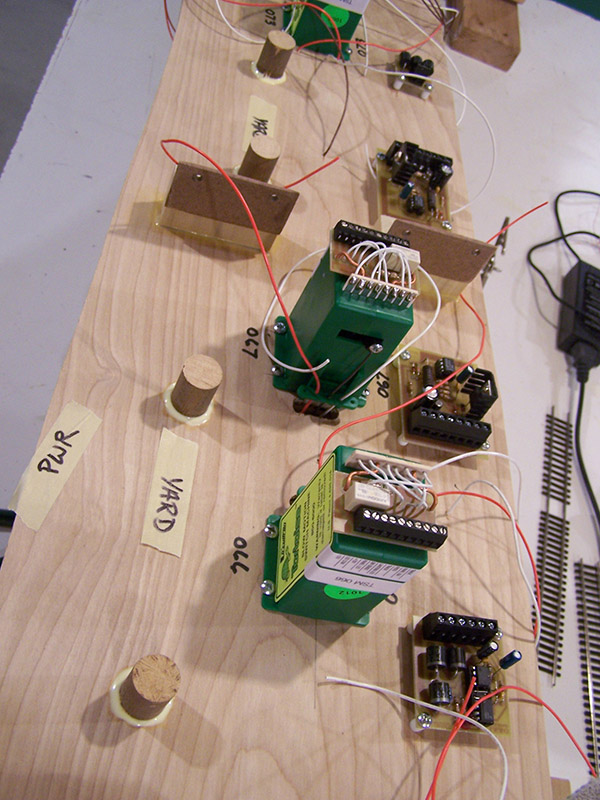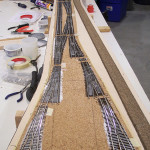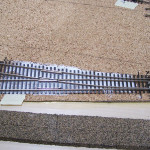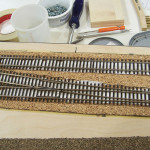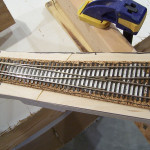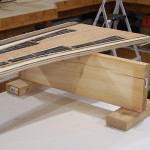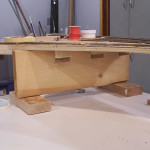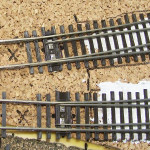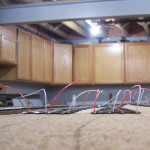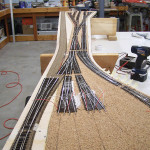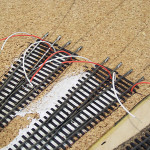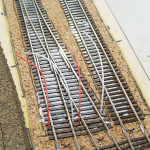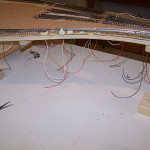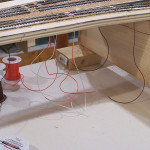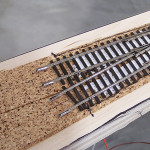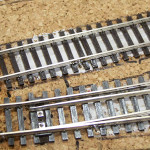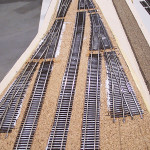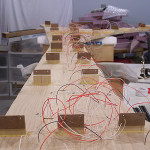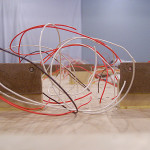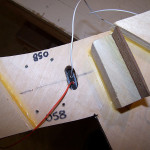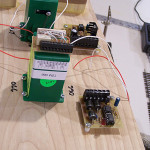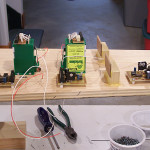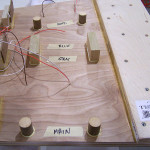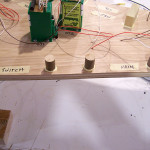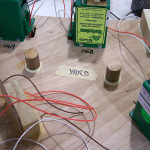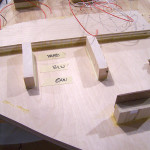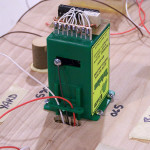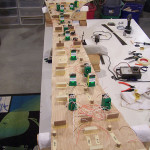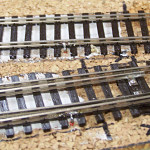Caulk really holds track well!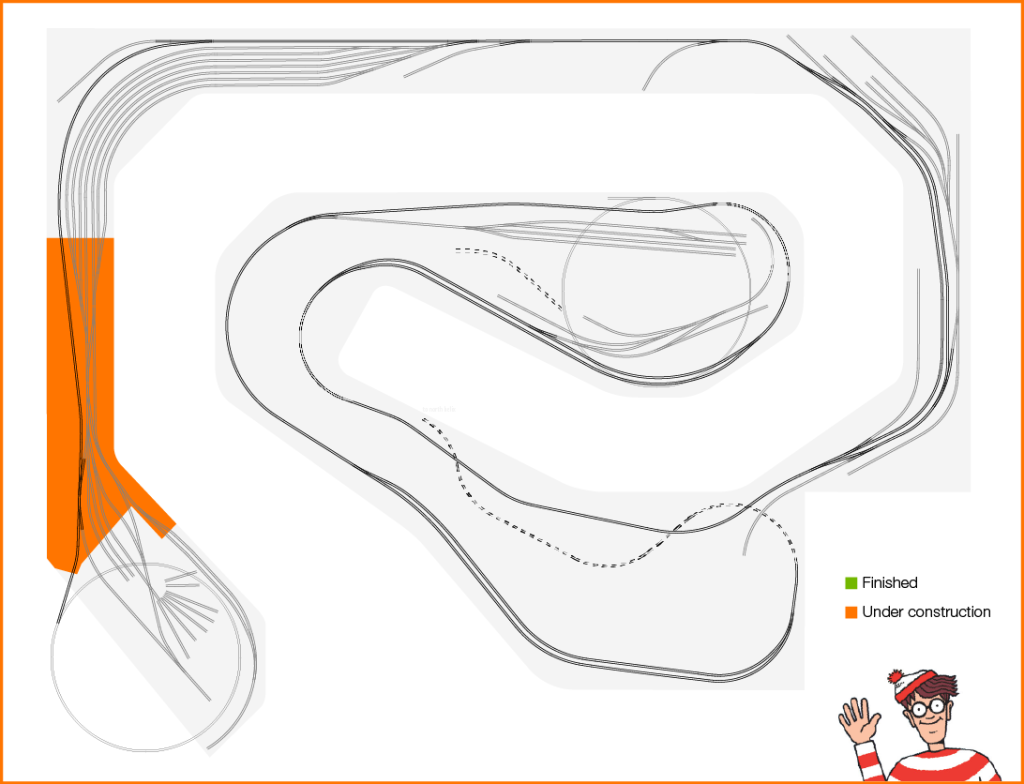 I had spread it really thin and had some concern that I may have spread it too thin. It was setting up very quickly during the spreading due to the thinness. Well, fear not. It has a fantastic grip today. Here is a picture of a typical application. There are more pictures in the gallery below.
I had spread it really thin and had some concern that I may have spread it too thin. It was setting up very quickly during the spreading due to the thinness. Well, fear not. It has a fantastic grip today. Here is a picture of a typical application. There are more pictures in the gallery below.
With the caulk dry the next step was to drop feeders. As I stood there looking at the track I thought there should be some logic to how many feeders there are and where they are placed. Ultimately I decided 3′ would be the target distance between feeders on the same rail and any rail that relies on the built in shunts in the switches would also get a feeder thus making the switch shunts redundant. 3/32″ drill in hand I set about drilling holes along the track making certain no feeder drops were placed over a benchwork cross member. 12″ long pieces of 24AWG stranded wire were cut and inserted into the holes as I went along. Orange is the positive rail, white the negative, and brown for frogs. The feeders for the frogs are on the backside away from the aisle to help hide them.
Next, feeders were soldered to the rails and frogs. I had read so much about people melting ties during feeder soldering I have to say I was a bit apprehensive going in. Well, that faded fast. Nothing to it. I suspect the folks that melt ties are too slow in their motions. With a good hot iron and a little flux on the rail it was a piece of cake to solder without melting anything.
I first applied a tiny bit of solder to the rail. Then I tinned the feeder wire. Once the wire was in place all that was required was to press the two together with the iron. The thin pre-tinned stranded wire joins with the rail solder instantly when the iron touches. A little cleaning with IPA on a cotton swab to remove the flux and finished.
The switch point rails received a different method. It is very common in the hobby for people to solder little jumpers across the hinge of the points. I did not do that. Instead I soldered feeders inside the rivets that hold the points to the throwbar. Solves two problems at the same time – the rivets had to be filled anyway so as to disguise the fact they are big rivets and it provided a totally invisible way of powering the points. The feeders come up through the Tortoise slot and are held away from the Tortoise wire by the fulcrum piece. Cool, huh?
Speaking of Tortoises… I ended up replacing the throw wire with a heavier gauge piano wire. 0.047″ instead of the original 0.025″ to be specific. While the 0.025″ wire did move the points just fine I wasn’t pleased with the amount of tension it applied holding the point rail against the stock rail. It was way too easy to flick the point away. In the perfect world where every wheel truck rolls perfectly in alignment there should be no real need for much tension. Sadly, I don’t live in a perfect world. Far from it. So I wanted a little extra insurance from wheels potentially picking the points. Hence the heavier wire. The Tortoise lever, fulcrum, and switch throwbar had to be drilled to accommodate the larger wire.
I kept adjusting (bending) the wire position during Tortoise final installation until there was the same amount of Tortoise travel in both directions. In other words, the switch throwbar was centered when the Tortoise mechanism was midway between throw end points. The fulcrum was then moved up until there was a slight wire pre-load at the end of the Tortoise travel. As you might imagine the track on 3/16″ thick cork (mainline) required a higher fulcrum setting than track on 1/8″ thick cork (yard). It took me the better part of a day to mount and adjust all of the Tortoises on the module. It was fun at first but I must admit adjusting Tortoise wires did get a bit tedious after a while.
Next came mounting the electronics and routing the power buses on the module. I used masking tape to mark where tie points would be located keeping in mind I will be upside down looking up when I connect future wires. Things like space to get my fingers in to wrap wire and accessibility with the soldering iron were considerations as I selected locations. I also want to minimize wire congestion in any one spot. I ended up moving the tape pieces quite a few times before I was satisfied with the routing. Just like utility lines, my power buses will be supported by “telephone poles”. I cut 3/4″ dowel into a bucketful of 1″ tall pieces. I would have preferred 1/2″ dowel but this is a case of use what you have. For reasons I have long forgotten I have a lot of 3/4″ dowel. The final work today was to glue them in place so wire can be strung across them tomorrow.
